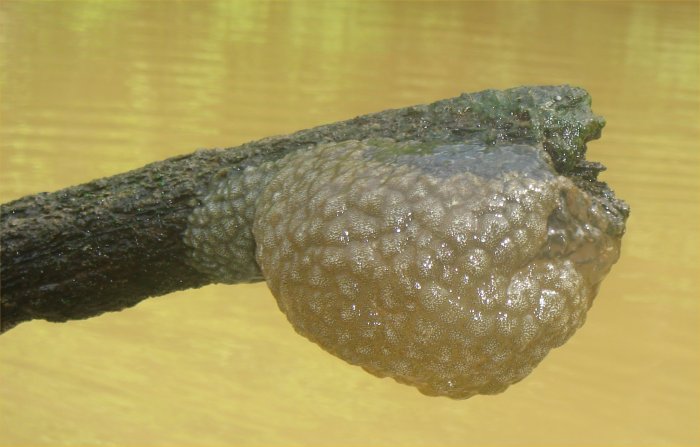 |
 |
|
|
Last Updated: 9/23/16
Hydra
Jellyfish
Moss Animals/Bryozoans
Freshwater Sponges
Hydra, or Coelenterata, look like small bags with tentacles. Growing to about an inch long, they eat whatever they can catch, mostly microorganisms. Their tentacles either stick to or sting their prey. In aquaria, they are the scourge of fry tanks; fry being a favorite food. While they tend to stay attached to some surface, they can move around to find better spots. The brown, green (contains algae), and American hydra are species common to North America.
Here are some photos sent to me by Mike of hydra in his aquarium that hitched a ride on some
plants. They are about 9 mm long from the anchor to the tip of their tentacles:
Hydra close up
Hydra group
Hydra with a victim - the hydra has caught a
baby rosy red minnow; note that the fry is already growing fungus on it.
There is only one species of freshwater jellyfish in North America, Craspedacusta sowerbyi. It goes through life stages including one similar to the hydra and grows to only about a half inch to look like the more common marine species.
Similar to sponges, but with tentacles, moss animals or bryozoans are strange creatures. About 15 species occur in North American fresh waters. They grow in still, clean water. Many thousands of individuals may encrust onto rocks, pipes, etc. One of the most common freshwater American species of bryozoan is Pectinatella magnifica. Enter that name in to Google Images and see a bunch of interesting photos of it!
Some bryozoans may form huge masses that may appear to be some sort of egg mass. Here are
some sites with photos and information:
Bryozoans
What's that stuff
in the water? - includes a bryozoan colony photo.
Blog - about two-thirds of
the way down this page is a photo of a large, ball-like, free freshwater bryozoan.
Joy sent me this photo of an "egg mass" to be identified on 5/31/07. I think it is a bryozoan colony. It is a rather large one that was at the water's surface, attached to a branch. They took it out of the water for the photo. I thought I had seen photos of similar colonies on the internet but now cannot find them. If you have further information about bryozoans or these photos, let me know.

Bryozoan - close-up of the individual animals in the colony from the above photo
Someone posted photos of a few massive pond balls that are probably bryozoans on my forum. See this post.
Here is a story about bryozoans in a lake:
Moss Animals Invade
Allen sent these photos of "frog eggs" from Kansas to be identified on 10/9/08. They are
bryozoans.
Bryozoans
Bryozoans
Bryozoans
Bryozoans
On 1/02/09, Andrew sent this photo for identification. It is a bryozoan colony (ball).
Bryozoan colony
On 1/19/09, Valerie sent this photo of a dark round ball that she found in her pond. She wanted
to know what kind of eggs it might be but it is not eggs. I am not sure what it is (plant material,
seed ball, algae, moss, bryozoan, etc.) but guess it may be a kind of bryozoan that I have yet to
see.
Pond ball
John sent these "egg" photos on 7/3/09. They are bryozoans.
Bryozoan ball
Bryozoan ball
Scott in Alabama sent this photo of an "egg" in a jar to be identified on 10/25/10. It is a
bryozoan.
Bryozoan
Stacy in Maine sent these photos on 9/2/16 for identification.
Bryozoan out of the water.
Bryozoan in the water.
There is only one family of fresh water sponges or Porifera. About 150 species live in ponds and lakes throughout the world. Larvae are free swimming but adults are brown or greenish globs from an inch to a dozen square feet in size. Green sponges have symbiotic algae. They eat microorganisms that get sucked in through their pores. A single sponge is actually a colony of animals like coral. In cold areas, sponges may drop gemmules which survive the winter on the bottom of the pond with the "parent" dying.
|
|

|

|
E-mail RobynCopyright © 1997-2026 Robyn Rhudy |

|
 |